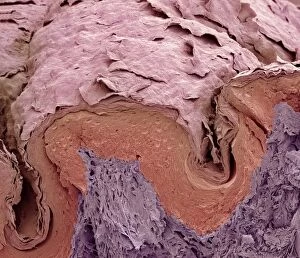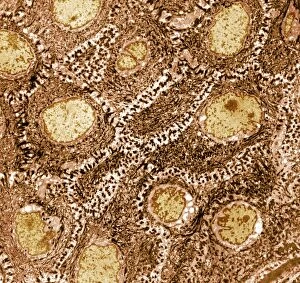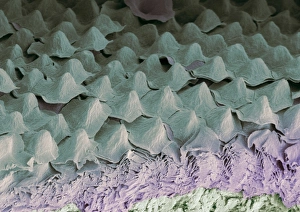Keratinocytes Collection
Keratinocytes: The Building Blocks of Healthy Skin Skin cells, known as keratinocytes, play a vital role in maintaining the health and integrity of our skin
All Professionally Made to Order for Quick Shipping
Keratinocytes: The Building Blocks of Healthy Skin Skin cells, known as keratinocytes, play a vital role in maintaining the health and integrity of our skin. Through advanced imaging techniques like Transmission Electron Microscopy (TEM) and Scanning Electron Microscopy (SEM), we can explore the intricate details of these remarkable cells. In SEM images of finger skin, we observe the outermost layer composed primarily of keratinocytes. These flat, scale-like cells form a protective barrier against external factors such as UV radiation and pathogens. Zooming in further with SEM C013 / 4781 and SEM C013 / 4780, we witness the fascinating structure of individual keratinocyte skin cells. Their tightly packed arrangement contributes to the strength and elasticity of our skin. TEM allows us to delve deeper into the microscopic world within our skin. It reveals intricate networks formed by interconnected keratinocytes that provide structural support to tissues beneath them. TEM also showcases how these specialized cells communicate through gap junctions or desmosomes. During wound healing, SEM captures stunning images of wound scabs forming over damaged areas. These scabs consist mainly of clotted blood mixed with dead keratinocytes that act as temporary protection while new tissue forms underneath. As healing progresses, SEM shows us an evolving landscape where fresh layers replace old ones until complete restoration is achieved. Understanding keratinocyte behavior at different stages aids researchers in developing innovative skincare products and therapies for various dermatological conditions like burns or chronic wounds.









